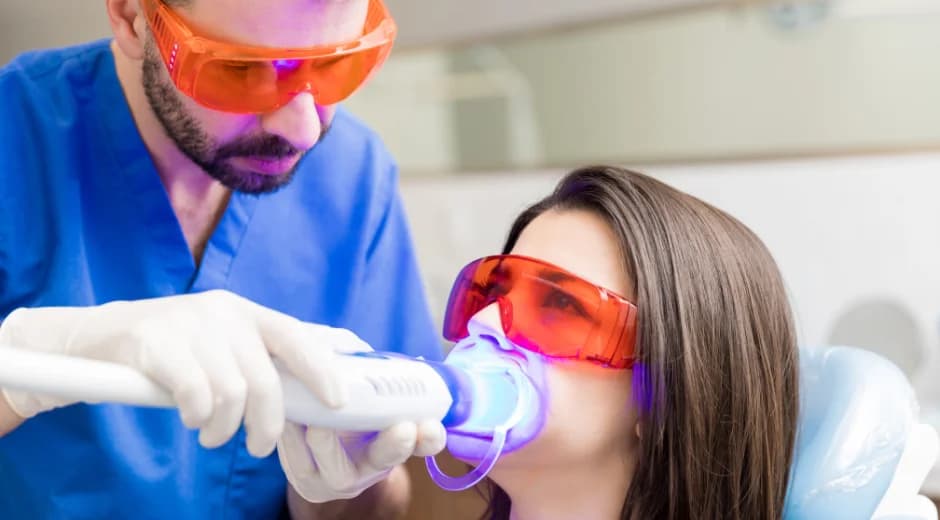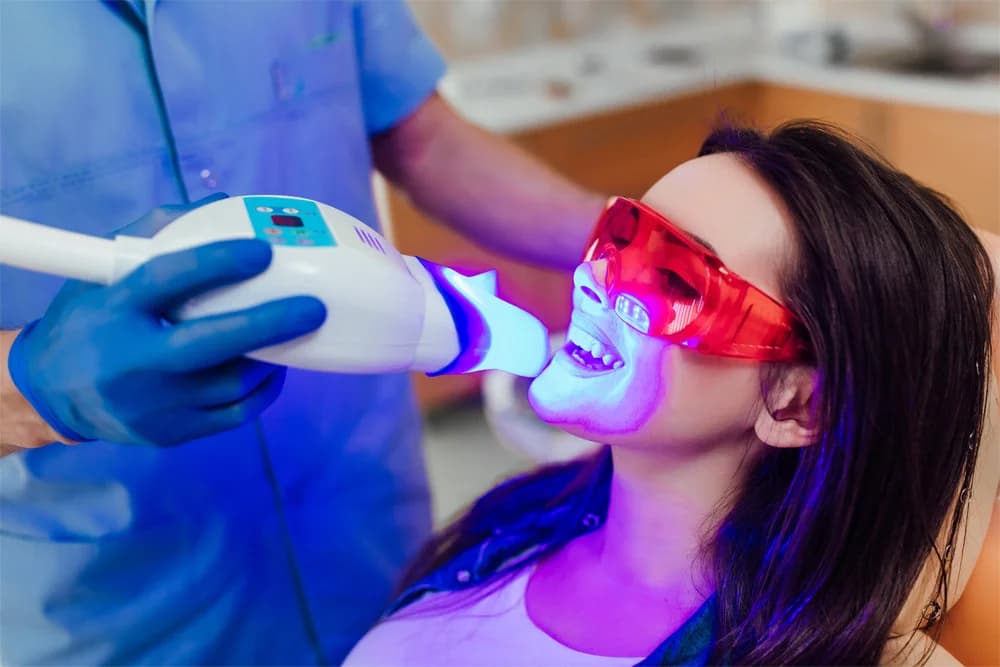Teeth whitening is a bleaching process to make your teeth lighter. Chemicals such as hydrogen peroxide or carbamide peroxide are used to lighten your teeth' color by several shades. The chemicals usually come in a gel, which is applied to your teeth. Sometimes a light is used too. This is one of the ways yourfavorite celebrity achieves that pearly white smile.
What is teeth whitening?
Teeth whitening aims to lighten the color of the teeth. This treatment is performed in an attempt to whiten or lighten the shade of teeth that appear dark or discolored. Your teeth may be discolored for many reasons; your dentist can determine the most effective treatment for you.
Teeth whitening vs. teeth bleaching
Teeth whitening works by removing stains and buildup that cause them to look yellow or brownish. The term whitening can refer to any product used to brighten your smile such as whitening toothpaste. However, the term bleaching refers to products that will whiten teeth beyond their natural color. These products contain bleach in the form of hydrogen peroxide or carbamide peroxide.

What Causes Tooth Staining?
Age
Starting color
Translucency and thinness
Eating habits
Smoking habits
Drugs/chemicals
Grinding
Trauma
What happens during teeth whitening?
Patients will need to have 2-3 visits to their dentist to complete the teeth whitening process. Then your dentist will take an impression of your teeth to make a mouth guard and tell you how to use it with a bleaching gel. Then, using your mouth guard at home, you regularly apply the gel for a specified time over a few weeks. Some whitening gels can be left on for up to 8 hours at a time, which can shorten the treatment period.
Laser whitening, also known as power whitening, is another type of teeth whitening system that a dentist can provide. A bleaching product is painted onto your teeth and then a light or laser is shone on them to activate the whitening. Laser whitening takes about an hour.

What are the risks of teeth whitening products?
Care needs to be taken when using strong hydrogen peroxide whitening treatment. If the whitening treatment goes on the surface of the soft tissues, such as the tips, gums, and tongue, it can cause chemical burns. These burns will often turn into ulcers before healing.
Teeth whitening can also cause the teeth to become more sensitive such as to cold temperatures. If teeth whitening gels are used incorrectly, the sensitivity can be very severe where even breathing in air can cause the teeth to be painful. Your dentist will provide advice before starting your teeth whitening treatment that can help to prevent or reduce tooth sensitivity.
Advantages of teeth whitening
Whiter smile: Your smile is one of your most important characteristics. Having a whiter smile can have a positive influence on patients, improving their mood and confidence, and also on other people, who may perceive you as a more secure trustworthy person.
Improves confidence: Having whiter teeth is a key factor in improving self-esteem. Socially, having a healthy mouth and smile are highly valued factors, so having whiter teeth can provide you with more confidence and security in yourself.
Helps to improve hygiene: Teeth whitening requires good oral hygiene to be maintained once the treatment has been performed. Furthermore, a person who wants to have a teeth whitening treatment is generally someone who takes care of their oral health.
Rapid results: Teeth whitening requires between three to four sessions, but they can be carried out in a single appointment. Unlike many dental treatments, the results of teeth whitening are very quick.
Painless process: Most dental treatments involve certain discomfort for patients, both at the clinic and, sometimes, on the following days. Teeth whitening does not involve any discomfort for patients.

Teeth whitening aftercare
If you take good care of your teeth after treatment, professional whitening can last for some time. To maximize its effects, we recommend:
Brushing your teeth with fluoride toothpaste for two minutes, twice a day, to remove daily stains
Flossing daily
Regularly visiting the hygienist for a scale and polish
Stopping or at least cutting down on smoking
Cutting back on foods and drinks which can stain your teeth, such as coffee and red wine
Conclusion
In conclusion, before making your teeth whitening appointment, it’s crucial to be well-informed about the process. Understand that teeth whitening is a cosmetic procedure that can brighten your smile but may not be suitable for everyone. It’s essential to have a dental check-up to ensure your teeth and gums are healthy enough for the treatment. Be aware of the potential side effects, such as tooth sensitivity and gum irritation. Discuss with your dentist about the different whitening options available, including in-office procedures and at-home kits, and their respective costs.
Read More: